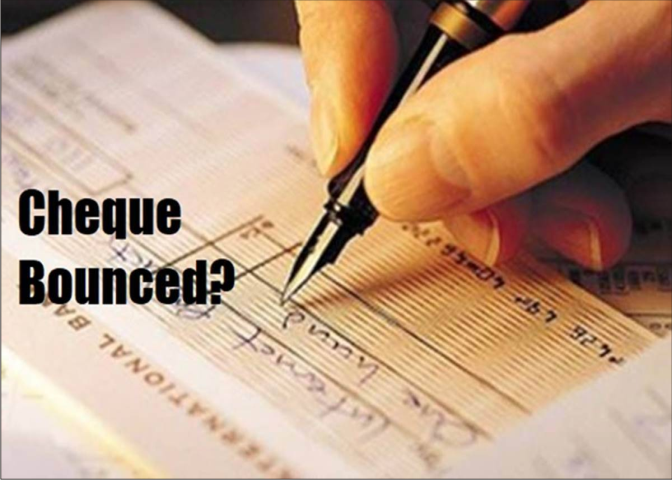Get Started With
servzone
Overview
The cheque bounce notice is nothing, but the issuer must notify that legal action will be taken if the cheque beneficiary fails to pay the cheque amount on an immediate basis.
Cheque bounce is a condition that arises due to non-payment of amount due to lack of balance in the account. Rapid action should be taken to recover the amount. A letter is sent to the drawer first to make payment otherwise proceedings will be initiated. Sometimes a quick agreement is reached on the letter. A cheque bounce is a serious offense by imprisonment and a fine as stated in the Punitive Instruments Act. The drawer of the cheque must present the cheque within 30 days from the date of dishonesty in the cheque to protect his rights under the Negotiable Instruments Act. In India, as per section 138 of the Negotiable Instruments Act, cheque bounce or non-payment of cheques is a serious offense with fine or imprisonment.
What is a cheque?
A Cheque is a “bill of exchange” payable on demand. The issuer of the cheque is known as ‘drawer’ whereas in whose favor the cheque is issued is known as ‘drawee’.
Cheques are used in almost all transactions such as repayment of loans, payment of salaries, bills, fees etc. Most cheques are processed and cleared by banks daily. Cheques are issued for the reason of securing proof of payment. Nevertheless, cheques are a reliable method of payment for many people. On the other hand, it is always advisable to continue to cross “Account Payee Only” cheques in order to avoid its misuse.
The following information is mandatory
- Date when cheque is drawn.
- Date of presentation of the cheque.
- The reason for non-realization of payment.
When can a cheque bounce notice be issued?
- The cheque should be presented within 6 months from the date of its issue.
- The cheque should be rejected for not having sufficient funds.
- The maker of the cheque has not paid the amount in respect of the bounce of the cheque within 15 days from the date of service of the notice.
- The beneficiary has informed the maker of the cheque within 30 days from the date the cheque bounces.
- A cheque is provided for settlement of any previous liability.
How to send a cheque bounce notice?
Cheque bounce notices can be drafted through our platform. Once drafted, it is necessary to print it on plain paper or on the business letterhead, after which it is given to the issuer of the cheque. The cheque bounce notice must contain the following
- Cheque beneficiary name,
- Name and address of the cheque issuer,
- Cheque return date,
- Reason for refund of cheque,
- Requested to cheque issuer for immediate alternative payment and
- That it is issued in accordance with section 138 of the Negotiable Instruments Act.
A cheque bounce notice is sent via registered post for the purpose of recording the date of issue of the notice formally. The cheque beneficiary can keep a copy of the letter with him while the other copy is given to the issuer of the cheque through registered post.
Why and when a cheque bounce notice is issued?
- The first condition is that the cheque should be towards liability.
- Within the period of 6 months after the validity of the cheque, it should be presented by the beneficiary.
- The bank may have returned the cheque due to insufficient funds.
- Within 30 days of receipt of information from the bank about the insufficiency of funds, a written cheque for payment is demanded by the payer giving a bounce notice.
- Within 15 days of receiving written notice of cheque bounce, the drawer fails to pay the said amount.
- The legal action commences due to the action within one month from the date.
What are the requirements to consider the validity of a cheque bounce notice?
- It should be in terms of section 138 of the Negotiable Instruments Act;
- Information about cheque presentation,
- Reason for non-payment and Information about the request made to the cheque issuer to make the payment immediately
- A notice must be presented to the issuer of the cheque within 30 days of the return of the cheque.
How to initiate legal action
- The beneficiary issues the cheque bounce notice by registered post to the defaulter within 30 days of the cheque dishonest. The cheque bounce notice must be in a proper format that includes the nature of the transaction, the amount, the date on which the bank has the deposited cheque, the date of the cheque bounce, the reason for the cheque bounce and the information about the beneficiary, and the beneficiary 15. Payment is requested within days. .
- Within 30 days of the expiry of the 15-day notice period, the payer may file a criminal case in court in case of default in issuing payment.
- Complaints regarding cheque bounce should be filed in the court of the city where the cheque was presented.
- After the case is registered in court, a hearing will be held and summons will be issued under Section 138 of the Negotiable Instruments Act.
- The cheque defaulter will have to appear before the court to resolve the case.
Cheque bouncing
- Demand notice is sent, within a period of 30 days. On receiving the demand notice, the drawer has to pay within 15 days.
- A cheque bounce notice is sent by registered post to make proof of the notice sent.
- If the payment is not received within 15 days, the payee can file a complaint before the magistrate within 30 days.
- Complaint has to be filed in the situation where the bank is located.
Punishment and Fines
On receipt of the complaint, along with an affidavit and a trace of the relevant paper, the court will issue summons and hear the case. If found guilty, the defaulter can be punished with monetary penalties, which may amount to double probation or imprisonment, which can be extended for two years or both. The bank also has the right to close the check book facility and to close the account for repeated offenses of bounced checks.
If the drawer pays within 15 days from the date of receipt of the notice, the drawer commits no offense. Otherwise, the payer can proceed to file a complaint in the judicial magistrate's court within one month from the expiry date of 15 days prescribed in the notice.


GST Registration

PVT. LTD. Company

Loan

Insurance


